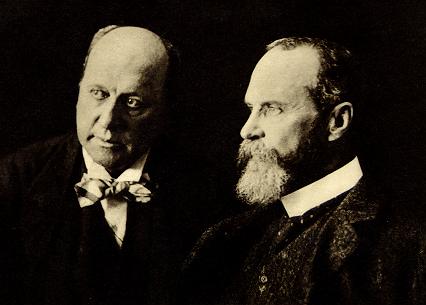"Credit rating agencies were at the heart of the rise of securitisation, and securitised assets were at the heart of the Subprime problems. Plainly these agencies are slated for major reforms. This column presents the statement of an eminent group of financial economists on such reform. "
I consider this a big issue, and I believe that Cate at Shopyield does as well:
"During the last few decades, securitisation has become a primary channel for enlarging financial markets and transferring credit risk from lenders to investors. Outstanding issues of privately securitized assets peaked worldwide at just under $12 trillion in 2008."
Just here, I'd like to note that my plan for supervising financial products includes two main categories:
1) Investments that transfer risk
2) Investments that magnify risk
Securitization, according to this author, would fall under 1. I believe that it would also fall under 2.
"Table 1. Estimated Size of the Global Asset-Backed Securities (ABS) Securitisation Market, Classified by Collateral Employed (in billions of dollars)
| Prime Mortgage-Backed Securities | $3,800 |
| Subprime Mortgage-Backed Securities | $780 |
| Commercial Mortgage-Backed Securities | $940 |
| Consumer ABS | $650 |
| High-Grade Corporate Debt | $3,000 |
| High-Yield Corporate Debt | $600 |
| Collateralized Debt Obligations | $400 |
| Collateralized Loan Obligations | $350 |
| Other ABS | $1,100 |
| Total | $11,920 |
Source: Compiled from a variety of sources including Goldman Sachs, JP Morgan Chase & Co, Lehman Brothers, Markit.com, Merrill Lynch and IMF Staff estimates.
This is what is being used for collateral in Securitization. I'm going to quickly rate the collateral as we go down the list by my view of risk: Less Risky, Very Risky, Very Risky, Becoming Very Risky, Less Risky, Very Risky, Very Risky, Very Risky, and anything other or unknown I call Very Risky. So for me, Less Risky has fewer categories, but over half the actual amount."When properly structured and monitored, securitisation promises numerous benefits. It can generate opportunities for specialisation that reduce funding costs, increase the range of financial products available, encourage financial institutions to deploy capital more efficiently, and allow borrowers, lenders, and investors to manage their risks more flexibly."
Benefits of Securitization are:
1) Reduce costs ( This I doubt )
2) Increase investment opportunities ( Definitely )
3) Increase the efficiency of investment ( I can see that this could be true if it really does increase liquidity, etc., but this efficiency needs a more empirical basis than the theoretical one that keeps getting thrown out ) NB: No more using the word "deploy". Paulson killed it.
4) Help manage risk more flexibly ( See, this one, like 3, doesn't seem to have worked very well, so we're still dealing here with a theoretical position. I'm not saying that some securitization didn't work. I'm just saying that it would be nice to see some figures supporting this. I understand that it can work and probably has in many instances.)
"However, transferring risk undermines incentives to perform due diligence at virtually every stage in the securitisation process. In the last year, evident shortfalls of care and diligence in the origination, rating, and securitisation of mortgages have led to a collapse in the prices of securitisations related to subprime mortgages, alt-A mortgages and other leveraged loans. The suddenness and extent of this price decline has undermined confidence in the reliability and integrity of the ratings process for asset-backed securities, and has reduced prices and credit flows in every market in which investors count on ratings firms to ascertain the quality of debt."
It's made me question the whole Credit Rating Agencies Model. I should also add that I see the trio of Fraud, Negligence, and Fiduciary Mismanagement being a live issue here.
"Meeting in Glen Cove, New York in July 2008, the Financial Economists Roundtable (Roundtable) discussed the need to strengthen the securitisation process by changing the incentives under which Statistical Ratings Organisations (SROs) operate."
Like getting paid by the people rated?
"SROs (profit-making firms that prefer to call themselves credit rating “agencies”) play a central role in testing the quality of the pool of obligations being securitized and in creating and marketing “tranches” of graded claims to cash flows from the underlying mortgages or other debt. The scope and scale of ongoing ratings downgrades and defaults on securitized debt make it clear that the ways in which credit ratings are used and constructed must be reformed."
There's no way to take that as anything but an understatement. I believe that they're not competent to rate tranches, because they involve too much opinion. The SROs should only rate a very well defined and limited area of investments, unless their whole model, including payment, changes.
Cate righly believes that all of this is opinion, and that total transparency will solve the problem.
"The Roundtable sees a strong need for three types of credit-rating reform.
- The Roundtable supports strategies designed to improve SRO incentives by increasing the transparency of their modelling practices and holding their managements accountable for negligent ratings errors."
2) "The Roundtable challenges the wisdom of incorporating SRO ratings in securities and banking regulations issued by governmental entities. By outsourcing public authority to private firms, this practice intensifies the conflicts of interest that SRO personnel must resolve."
This makes sense.
3) "To acknowledge differences in the degree of leverage that is imbedded in different issues of securitized debt, Roundtable recommends that SROs be required to state an express margin for error in their ratings for every tranche of securitized instruments."
Here's my fudge factor. They're recommending that the fudge factor be quantified. That would at least make the evaluation more objective.
"Bond markets functioned internationally for 300 years before the first rating organisations appeared in the US. An active corporate bond market, largely in debt issued by railroad companies, emerged in the middle of the 19th century in the US more than half a century before the first SRO opened for business. SROs remained largely US-focused until the 1970s, when global capital markets began to re-emerge after fading in the interwar period.
In the pre-SRO era, underwriters performed some certification and monitoring for investors. Thereafter, third-party ratings mitigated asymmetric-information problems between issuers, underwriters, and investors by credibly centralizing efforts to collect and analyze the information needed to estimate, monitor, and update the probability of default of individual bonds.
Ratings data also expanded the range of investors willing to hold corporate bonds to include parties that lacked the resources to undertake a complete and independent credit analysis. SROs originally earned their revenue by selling ratings manuals directly to investors.
Building a reputation for accuracy is critical to the success of any SRO. Ratings firms prospered to the extent that their predictions of the probability of default proved reliable after the fact. Over time, the accumulation of reputational capital by successful SROs made entry difficult for new SROs. The result is that two or three SROs have dominated the market for credit ratings, and did so long before the SEC began to designate particular SROs as Nationally Recognized Statistical Rating Organisations (NRSROs) in the 1970s."
This reputation is what the SROs traded on in this current mess, and are desperately trying to get back, possibly by being too harsh now as they were too lax previously.
"In the early 1930s, incentives for SROs to produce reliable information for investors were complicated by introducing ratings into the regulatory process. Regulators of banks, insurance companies and pension funds began to use ratings to limit the riskiness of the assets held by regulated entities. Regulators now set two kinds of rules: rules that restrict the extent to which a firm can hold assets that fall below investment-grade or, as in the case of money market mutual funds, require a higher threshold than investment grade, and rules that link capital requirements to the ratings on individual securities, with lower capital charges for high-rated securities.1 The existence of such regulatory consequences was bound to intensify pressure on SROs to inflate the grades of lower-rated securities, because regulated clients routinely explore and develop ways of reducing their regulatory burdens. Frank Partnoy (1999, p.684)2 describes client pressure in this way: “[O]nce regulation … incorporates ratings, rating agencies begin to sell not only information but also valuable property rights associated with compliance with the regulation.” As ratings became more widely used in trigger clauses in bond contracts, strong ratings conveyed additional benefits to the issuer."This is point 2 above.
"Of course, a concern for protecting their reputations can act as a healthy counterincentive. Studies of ratings accuracy during the 20th century find that SROs have done a reasonably good job of predicting the probability of default of corporate bonds relative to regulatory indicators3 of default risk and market measures of default risk. Still, grade inflation has occurred. Caouette et al. (2008) observe that though the ratings do represent relative risks (on average) reasonably well, they are less reliable as indicators of absolute credit risks; default probabilities associated with specific rating levels drift over time and therefore need to be frequently updated.4"
Okay. There's a natural drift towards leniency in the grading.
"The spread of photocopying technology facilitated unauthorized reproduction of SRO rating manuals, which undermined the traditional user-pays revenue model. SROs responded by shifting to a business plan in which the issuer pays for their services. This plan intensified SRO conflicts of interest with issuers. Issuers and underwriters actively shopped for ratings and were unwilling to pay for ratings they deemed too low.5 In the case of the newer securitized debt, pressure for favourable ratings has been particularly intense because the large underwriters of structured debt could direct substantial future revenue to a cooperative NRSRO, thus increasing the potential for undue influence. SROs argued that concern for maintaining their reputational capital would nevertheless insulate ratings decisions on securitized debt from undue influence by issuers. This argument became increasingly less persuasive as income from rating structured debt began to increase sharply and account for almost half of the revenues of the three dominant firms."
If you've read my blog, you've heard most of this history before, but I still love it. What basically happened was that the method of paying for rating by SROs shifted to the payment coming from the business being rated. The Raters were being paid by the Rated now. This is a deadly conflict of interest. It worked better with easier investments to grade, but it was never a truly good model.
"A further weakness inherent in issuer-pays arrangements is that they undercut SRO incentives to monitor and downgrade securities in the post-issuance market. The re-rating of securities is usually paid for by a maintenance fee that is collected in advance from each issuer. Few issuers are eager to be monitored closely, especially when monitoring is apt to result in downgrades, and so it is not surprising that ratings are seldom downgraded until long after public information has signalled an obvious deterioration in an issuer’s probability of default.6"
I don't see it so much as an incentive than a reluctance.
"Not until 1975 did the SEC confront the problem of how to determine whether a particular SRO could be relied upon to provide ratings of sufficiently high quality that they could be used in the regulatory process. The SEC’s solution to this problem was to certify particular SROs as meeting sufficiently high standards to be designated by the SEC as an NRSRO. Other regulatory agencies, Congress, and many private agreements made use of the SEC’s designation of qualified NRSROs. For potential new entrants to the ratings industry, the costs and uncertainty of obtaining NRSRO status imposed an additional, legal barrier on top of their already substantial reputational disadvantage. From 1975 to 2002, although the SEC received numerous applications from entities in the US and abroad, only one new general-purpose NRSRO was approved."
This high entry fee was the very first issue that I questioned, because it made the SROs a cartel, in essence, with incentives for collusion, as Robert Waldmann argues. Waldmann says that there is rating collusion to make sure that no one stands out negatively from the crowd, thereby negating any real chance of assessing and comparing the performance of the particular SROs.
"The NRSRO designation strengthened the market power of the dominant three incumbent firms: Moody’s, Fitch, and Standard & Poors. In turn, the oligopolistic position these firms enjoy reduces their incentives to compete in ratings methods and procedures. For example, even though SROs inevitably lack long histories and through-the-cycle data on innovative instruments, they have all been slow to draw on the information generated by derivatives trading (especially in credit default swaps) and from secondary markets for debt and equity, both of which would help them analyze potential defaults in a forward-looking context. Nor have SROs developed procedures for supplying information on correlations that investors need to protect against concentrations in risk exposure that might exist in a portfolio of securities."
Bingo!
"Despite the potential benefits of strengthening competitive forces in the SRO industry, the three major NRSROs have been permitted to acquire competitors virtually without challenge.7 The Roundtable believes that the regulators could enhance competition among SROs by more vigorous application of antitrust policy. Although the SEC recently recognized a handful of additional firms as NRSROs in the last two years in response to pressure from Congress to ease barriers to entry, it will take considerable time for new entrants to wean much market share away from the three dominant firms."
In any Human Agency Model, this SRO industry was a disaster waiting to happen. There's no way but to see this arrangement as anything but a major cause of our current situation. However, for me, these decisions are at one with fraud, negligence, and fiduciary mismanagement, so let's now add collusion to our honor roll.
"Because some market participants are bound to base investment decisions primarily on credit ratings, efforts to improve ratings quality are important."
I guess that this is true.
"In June, the SEC proposed several ways to improve the work of SROs and to increase competition in the ratings industry in three ways. The avowed and laudable purpose of these proposals is to foster increased transparency, accountability, and competition in the credit rating industry for the benefit of investors. The precise models used by SROs are proprietary and to encourage an individual SRO to invest in improving its models, the models themselves must remain proprietary. At the same time, to hold SROs accountable for their performance requires that each SRO release enough information on data input into its models to allow outside experts to verify its conclusions or provide alternative results."
These sound like Cate's proposals.
"The SEC’s first proposal seeks to mitigate conflicts of interest, enhance disclosures, and improve internal policies and business practices at SROs. The second proposal would require NRSROs to differentiate the ratings on structured products from those that they issue on traditional bonds and loans, and perhaps to provide a timely and relevant accompanying narrative. The third proposal would nearly eliminate the role of ratings in SEC regulations. Roundtable supports the thrust of each proposal. To explain why, we discuss each in turn."
These sound very sensible.
"In the important areas of disclosure and incentive conflicts, the SEC’s first proposal would require SROs to:
- Publish all ratings and subsequent re-ratings in ways that facilitate comparisons of SRO performance in a timely manner. Disclosures would include performance statistics for spans of 1, 3, and 10 years within each rating category. ( Necessary )
- Disclose all information used to determine ratings for structured products. In addition, this would require each SRO to explain whether and how it might rely on the due diligence of others to verify the character of the assets underlying a structured product and to include sufficient information on the changing value of underlying assets to permit outside analysts (i.e., persons who are not paid by the issuer) to evaluate the riskiness of the structured claims issued against them. ( Necessary )
- Explain how frequently credit ratings are reviewed, whether different models are used for ratings surveillance than for setting an initial rating, and whether, when changes are made in an SRO’s models and procedures, they are applied retroactively to existing ratings. ( Necessary )
I agree with the SEC. In this crisis, we are fighting perceptions, and conflict of interest will prove to be a major perception going forward in our assessment of the causes and remedies of our crisis. This is just not on.
"The SEC or Congress might also impose disclosure requirements on issuers. Every US issuer of securitised claims could be required to provide a monthly balance sheet and income statement for each and every securitisation structure it creates, even if the securities are to be marketed offshore. The revenue-generating pool of underlying assets constitutes the structure’s assets and the tranches set by the securitisation structure constitute claims against these assets. When underlying assets lose value, whether through rating downgrades or outright defaults, prospective revenues diminish and the values of affected tranches deteriorate. These easy-to-interpret disclosures would make pending deteriorations in cash flows more visible to investors and permit the joint distribution of risk statistics for the various tranches to be studied more effectively."
I agree with this. It's not a terrible burden.
"The SEC’s second proposal seeks to differentiate ratings on securitisations in the future from those on ordinary bonds. Because of their imbedded leverage, securitised instruments may have a much deeper downside loss exposure than ordinary bonds. Using the same grading scale for both kinds of instruments reduces the effectiveness of restraints on institutional risk taking built into longstanding regulatory protocols. This renders many inherited regulatory strategies obsolete and was bound to confuse at least some investors. As an estimate, every credit rating carries a calculable margin for error. Introducing a differentiated scale is one way to alert investors that downside margins for error are much larger for securitised claims than for ordinary debt. Because imbedded leverage and downside margins for error grow larger when claims on an underlying asset pool are tranched and retranched, SROs should be required to express ratings on securitised debt in a two-dimensional fashion (i.e., with an accompanying estimate of their particular margin for error). This would be much more useful than merely developing a separate scale for securitised instruments. SROs might either use estimates of potential downside variability to rate claims in an interval framework (e.g., a particular rating might be expressed as lying in the range from A to AAA) or prepare and publish the volatility estimates themselves."
Okay, maybe this answers my concerns, which are that simple graphs on tranches are apparently hard for people to read, so we need some way to make certain that these ratings say "Buyer Beware" where appropriate. I have to say that people misreading that ladder of risk on tranches disturbed me.
"The SEC’s third proposal addresses its practice of basing rules and reporting procedures on NRSRO ratings. The concern is that the use of NRSRO ratings in supervision simultaneously outsources some of the regulatory authority’s political accountability to profit-making firms and appears to confer an official seal of approval on their methods that might reduce the willingness of other parties to undertake due diligence and invest in securities analysis. The SEC proposes to remove references to NRSRO ratings from virtually all of its rules and protocols.9"
This point is Essential. Anytime the government gets involved in anything, like GSEs, even tangentially, people assume that the government is backing it. This accounts for a major portion of the moral hazard associated with implicit government guarantees. The Actions Of The Government In This Regard Are As Important As What It Says. That's how there can be implicit government guarantees.
"The Roundtable discussion divided references to NRSRO ratings in SEC regulations into two categories:
- Prescriptive mandates that tell asset managers what they must do; and
- Quasi-safe-harbour provisions that provide firms, managers and directors some protection from liability for adverse outcomes."
"The Roundtable strongly endorses eliminating from SEC regulations every prescriptive mandate that is or would be based solely on credit ratings set by NRSROs. We believe this will have three advantages. First, the prudence of investment decisions must ultimately be evaluated in a portfolio context and cannot be assured by constraining the credit quality of individual assets an institution holds, regardless of how accurate the SRO ratings might be. Second, depriving SRO ratings of regulatory consequences will remove a major source of pressure for ratings inflation. Third, in the absence of SEC mandates, managers and directors can and will subject the prudence of their decision making to review by a much wider array of outside monitors. In particular, they will expand their use of directors and officers insurance and introduce letters of assurance from well-respected experts. Whether or not these other monitors aspire to attain SRO status, they would supplement, extend, and challenge the assessments of individual securities made by SROs, thereby injecting valuable competition into the market for rating services."
I agree.
"The Roundtable found it harder to assess the net benefits of quasi-safe-harbours (offered mainly to directors and officers of money market mutual funds) based on credit ratings.10 Some members felt that removal of quasi-safe- harbours would yield benefits from increased managerial diligence and reduced pressures for grade inflation that would more than offset the increased compliance costs and costs of defending nuisance lawsuits. Other members believed that there are efficiencies to be achieved by use of intermediaries specialized in credit review. They argued that the rating requirements for money market mutual funds had worked reasonably well (apart from the current credit crisis) and that increased compliance costs, especially for smaller funds, would swamp any benefits that might emerge from increased managerial effort. Moreover, it was agreed that retaining this role for NRSROs would provide SROs with an incentive to register for NRSRO status and comply with the enhanced disclosure requirements. Even if the SEC should decide to continue to offer quasi-safe-harbours based on credit ratings, requiring a new ratings scale for securitised debt means that the content of such provisions has to be analyzed afresh to acknowledge the implications of the distinctions created. A new scale will similarly force banking agencies and state regulatory bodies to rethink and rephrase all rules and regulations that rely on credit ratings. In view of the importance of regulation-induced innovation in creating financial turmoil, such rethinking is long overdue."
I'd probably get rid of them.
"Although the SEC stressed that it had consulted with the President’s Working Group on Financial Markets, the Financial Stability Forum and the Technical Committee of the International Organisation of Securities Commissions (IOSCO), the SEC’s proposed removal of references to ratings in its regulations diverges sharply from reform strategies currently being implemented by other regulators in the US and abroad. For example, the Treasury’s temporary insurance of money market mutual funds relies on compliance with rule 2a-7 that relies on rating as a useful indicative guidance, and the Treasury’s recent plan to recapitalize banks will be contingent on ratings to some extent. Roundtable sees the SEC’s third proposal as providing a timely challenge to other regulators to re-examine the extent to which they plan to employ SRO ratings in their own regulatory schemes."
Good idea.
"Although new rules and enhanced supervision might induce slightly better SRO performance, it is unlikely that increased government oversight of the production of credit ratings can improve SRO performance over time and improve the performance of investment managers as effectively as market forces can. It is particularly important for banking regulators to reconsider their reliance on ratings decisions. By adopting Basel II, they are linking minimum capital requirements for some banks to ratings issued by whatever SROs they recognize in each individual nation. Some banks will be free to use Basel II’s Standardized Approach, which the EU and Japan have already begun to implement and is proposed for implementation in the US. In this scheme, capital charges are assigned to each bank’s assets according to their credit ratings, with unrated assets receiving a 100% risk weight. Since loss reserves are already based on anticipated losses, capital requirements are intended to provide a buffer against unexpected risks. Thus, it is illogical to use credit ratings to establish capital requirements, since they convey no information about the volatility of an asset’s return around expected loss experience. In addition, ratings may be useful for establishing loss reserves for particular assets, but they say nothing about how a bank’s net worth or its portfolio of assets may vary in value. The amount of capital that must be set aside to achieve a particular target level of safety has to be linked explicitly to measures of the volatility of its earnings, not asset ratings."
Don't use them.
"Since the subprime crisis has had a world-wide reach, regulatory authorities in other countries are also thinking about how to regulate SROs. Despite the SEC’s attempt to coordinate its actions with IOSCO, it is clear that different countries may respond to the crisis in different ways. The use of ratings is hard-wired into many EU regulations. The EU’s internal market commissioner is thinking of introducing some exacting regulatory requirements to make sure ratings are not “tainted” by the conflicts of interest inherent to the ratings business. The European Commission has proposed a registration and oversight regime that would have two features. The first charges the Committee of European Securities Regulators (CESR) with the responsibility for choosing an individual country to register, coordinate and consolidate oversight of individual SROs. The second creates a central supervisor, financed from the EU budget, to license rating organisations. As capital markets become more closely integrated, ratings organisations are bound to find it difficult to operate under different rules in different locations. Also differences in rules would complicate cross-country comparisons of ratings for investors and regulators. If a single supervisory approach is to be adopted, Roundtable strongly supports the SEC’s strategy which relies on greater transparency, increased competition and the abandonment of the practice of incorporating NRSRO ratings in regulatory mandates. The Roundtable hopes that other regulators will follow the SEC’s lead."
Coordination is a good idea.
Am I convinced? Not yet. I'm still bothered by the entire model. But I'm feeling better about where we're going.
"FINANCIAL ECONOMISTS ROUNDTABLE MEMBERS SIGNING STATEMENT
Edward Altman, New York University; Kose John, New York University; Harold Bierman, Cornell University; Edward Kane, Boston College; Marshall Blume, University of Pennsylvania; George Kaufman, Loyola University Chicago; Willard Carleton, University of Arizona; Dennis Logue, Dartmouth College; Andrew Chen, Southern Methodist University; Jay Ritter, University of Florida; Tom Copeland, Massachusetts Institute of Technology; Kenneth Scott, Stanford University; Elroy Dimson, London Business School; Lemma W. Senbet, University of Maryland; Franklin Edwards, Columbia University; Jeremy Siegel, University of Pennsylvania; Robert Eisenbeis, Economic Consultant; Chester Spatt, Carnegie Mellon University; Wayne Ferson, University of Southern California; Robert Stambaugh, University of Pennsylvania; Charles Goodhart, London School of Economics; Laura Starks, The University of Texas at Austin; Martin Gruber, New York University; Marti Subrahmanyam, New York University; Lawrence Harris, University of Southern California; Ingo Walter, New York University; Richard Herring, University of Pennsylvania."
To these fine men, I say the following, in applying to join you:
Camelot! Camelot!
In far off France I heard your call
Camelot! Camelot!
And here am I to give my all
I know in my soul what you expect of me
And all that and more I shall be
A knight of the Table Round should be invincible
Succeed where a less fantastic man would fail
Climb a wall no one else can climb
Cleave a dragon in record time
Swim a moat in a coat of heavy iron mail
No matter the pain he ought to be unwinceable
Impossible deeds should be his daily fare
But where in the world
Is there in the world
A man so extraordinaire
C'est moi! C'est moi!
I'm forced to admit
'Tis I, I humbly reply
That mortal who
These marvels can do
C'est moi, c'est moi, 'tis I
I've never lost
In battle or game
I'm simply the best by far
When swords are cross'd
'Tis always the same
One blow and au revoir
C'est moi! C'est moi!
So admir'bly fit
A French Prometheus unbound
And here I stand with valor untold
Exception'lly brave, amazingly bold
To serve at the Table Round
The soul of a knight should be a thing remarkable
His heart and his mind as pure as morning dew
With a will and a self-restraint
That's the envy of ev'ry saint
He could easily work a miracle or two
To love and desire he ought to be unsparkable
The ways of the flesh should offer no allure
But where in the world
Is there in the world
A man so untouch'd and pure
[spoken] C'est moi
C'est moi! C'est moi!
I blush to disclose, I'm far too noble to lie
That man in whom these qualities bloom
C'est moi, c'est moi, 'tis I
I've never stray'd from all I believe
I'm bless'd with an iron will
Had I been made the partner of Eve
We'd be in Eden still
C'est moi! C'est moi
The angels have chosen to fight their battles below
And here I stand as pure as a pray'r
Incredibly clean, with virtue to spare
The godliest man I know
C'est moi!







































2 comments:
Hi Don...
Excellent post on credit raters... both the economists perspectives and your comments were very thought provoking... thanks for including my ideas...
I am not very knowledgable about banking regulation. I do understand the general principles.
I tend to think about ratings in the context of pricing cash fixed income, liquidity and relationship to CDS. I see the credit markets as giant matrixes which rise and fall in value according to monetary policies and economic conditions.
I wonder how much effect banking intermediation really has... especially since they don't retain much securitized interest.., they are just passthroughs...
What I've been wondering about is the relation between mark-to-market accounting and market liquidity and pricing for rated assets... lots of procyclicality here... there is probably a lot of academic literature out there.
I'm gonna think about this a little while and then write something up...
Camelot was one of my favorite movies as a child... one of the first color movies that I remember seeing...
Cate, I look forward to your thoughts. I'm having a tough day because I'm having a tough time editing my posts. The blog won't let me do it. I posted that one because I thought it might interest you even though it's taking me hours to correct it. I hope the problem ends soon.
Have a good day,
Don
Post a Comment